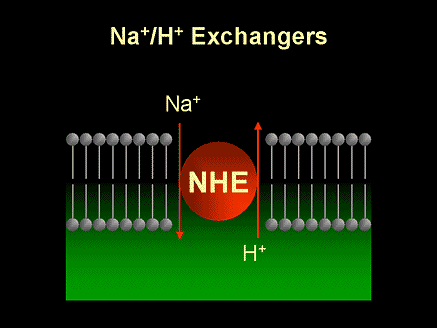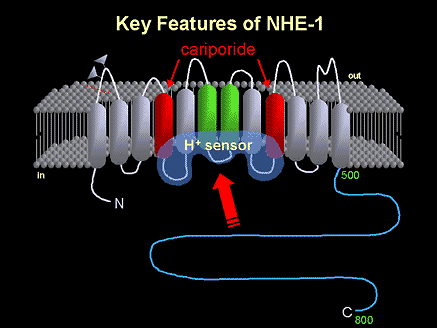Introduction

The carrot ( Daucus carota ) is a root vegetable, it has a crisp texture when fresh.The most commonly eaten part of a carrot is a taproot, it is a domesticated form of the wild carrot Daucus carota, native to Europe and southwestern Asia. The domestic carrot has been selectively bred for its greatly enlarged and more palatable, less woody-textured edible taproot. Carrots are widely used in many cuisines, especially in the preparation of salads, and carrot salads are a tradition in many regional cuisines.
The Food and Agriculture Organization of the United Nations (FAO) reports that world production of carrots for calendar year 2011 was almost 35.658 million tonnes. Almost half were grown in China.
Carrot-Wikipedia.
Description
It is estimated that 128 grams of carrots provide approximately 52-53 kcal (equivalent to about 220 kJ). Water constitutes about 113 g of the vegetable, sugars about 6.1 g, while the fibers are calculated at around 3.6 g, protein 1.2 g and fat 0.3 g.
It contains various minerals such as calcium (42.2 mg), phosphorus (44.8 mg), potassium (410 mg) and sodium (88.3 mg), and vitamins such as vitamin A (21383 IU), vitamin C (7.6 mg), vitamin K (16.9 mcg), folate (24.3 mcg) and choline (11.3 mg).
Nutrition facts and analysis.
Effects on various diseases

Many studies has shown the relationship between the consumption of green-yellow vegetables wich contain vitamin A (such as carrots) and a lower relative risk of lung cancer among all categories of smokers.
In particular, patients with lung cancer present lower serum vitamin A levels than control cases.
Vitamin A and lung cancer: a perspective.


The cause of this protective effects is in the antioxidant nature of vitamin A. Effectively, oxygen radicals are shown to produce DNA damage in many living cells and antioxidant defenses normally protect against such damage.
Antioxidants and cancer.
Furthermore carrots contain falcarinol, a phytonutrient that carrot uses to protect itself from fungal infections. The Journal of Agriculture and Food Chemistry reported that falcarinol reduces the risks associated with cancer.
Fighting cancer with carrots.
Falcarinol is shown to have antibacterial, antimycobacterial and antifungal activity but also anti-inflammatory, anti-platelet-aggregatory, neuritogenic and serotonergic effects. It seems to have also cytotoxic activity towards human cancer cells but the way falcarinol works in this sense is still unknown.
Aliphatic C(17)-polyacetylenes of the falcarinol type as potential health promoting compounds in food plants of the Apiaceae family.

Eating carrots may help improve vision and ward off eye disease, according to some researches.
Effectively, carrots contain beta carotene that is converted by the body into vitamin A. Vitamin A is used to produce rhodopsin, a pigment needed to see in dim light. So eating carrots helps the body to produce more rhodopsin which raises the effectiveness of the light sensitive area of the retina and improves night vision.
Lack of vitamin A lead to night blindness and other eye diseases.
Fighting eye diseases with carrots.
- Carrots and kidney diseases
According to some researches, beta carotene also helps kidneys filter toxins and prevent urinary tract infections because it reduces inflammation and helps repair damage to tubules.
This study has been published in the November 2012 issue of the "Journal of Thrombosis and Thrombolysis".
Beta-carotene benefits.
Researches noted that beta-carotene action is based on the inhibition of two genes that promote inflammation in the kidneys. These two genes are Ren 1 and PPAR-gamma that are up regulated by AngII that induces renal damage. β carotene treatment may repress the inflammatory genes (Ren 1, PPARγ) to achieve the protective effect.

Effect of β carotene on chronic renal damage.
Also pectin, a form of soluble fiber contained in carrots, seems to have positive effects on kidney failure.
An animal study published in October 2009 found that pectin was a more effective as a diuretic than activated charcoal or polyphepan. Pectin can also lower blood urea and creatinine levels.

The therapeutic and preventive effects of pectin in experimental renal failure.
- Carrots and liver diseases

According to a study published on the European Journal of Immunology, retinoic acid acts through the nuclear hormone receptor RAR to induce either gene activation or repression.
Retinoic acid production have been linked to many cells in the immune system.
In particular, RA seems to ameliorate hepatitis by selectively downmodulating IFN-γ and IL-4 production in disease-causing NKT cells in the liver.
Would eating carrots protect your liver?.

Researchers from Stanford University in California found clear links between high blood levels of beta carotene and a reduced risk of diabete Type 2 in people carrying a double dose of a variation in the gene SLC30A4, which have previously been linked to an increased risk of Type 2.
This study have been published on the journal Human Genetics.
Could carrots help prevent type 2 diabete.
The gene variant SLC30A4 codes for a protein that is involved in helping beta cells in the pancreas make insulin. Probably beta-carotene interacts with the gene in a positive way.
Can Carrots Reduce the Effect of Diabetes-Causing Genes?.
- Carrots and heart diseases



The involvement of sodium-hydrogen exchangers has been found in many cardiac diseases such as ischemic heart disease, cardiomyopathy and congestive heart failure. A study published on November 2013 tested the NHE inhibitory potential of hydroalcoholic and alkaloidal fractions of some vegetables (including carrots).
According to this study, the NHE inhibitory potential of these plant-derived phytoconstituents is greater than the potential of synthetic NHE inhibitors.
So these vegetables may be used for their therapeutic potential in NHE activation-related pathological complications.
Sodium-hydrogen exchanger inhibitory potential of Daucus carota.
NHE is a major mechanism by which the heart adapts to intracellular acidosis during ischemia and recovers from the acidosis after reperfusion. But NHE also mediates tissue injury during ischemia and reperfusion due to the fact that under conditions of tissue stress Na+-K+ ATPase is inhibited, limiting Na+ extrusion, resulting in an elevation in [Na+]i. The latter effect, in turn, will increase [Ca2+]i via Na+-Ca2+ exchange. In addition, NHE1 mRNA expression is elevated in response to injury. So the inhibitory effects of hydroalcoholic and alkaloidal fractions of carrots can help prevent heart damages.
The Myocardial Na+-H+ Exchange.
Carrots may also be used to prevent myocardial infarction. In a European multicentre case-control study alpha-tocopherol and beta-carotene concentrations were measured in adipose-tissue samples.
According to this study, a low alpha-tocopherol concentration is not associated with risk of myocardial infarction but high beta-carotene concentrations reduce the risk of a first myocardial infarction.
Antioxidants in adipose tissue and risk of myocardial infarction.
Effectively, oxydation of low-density lipoprotein may help the formation of atherosclerotic lesions that can lead to coronary heart disease and myocardial infarction. So the antioxidant effect of beta-carotene seems to be important in the prevention of ischemic damages.
Antioxidants in adipose tissue and risk of myocardial infarction.
Conclusions
Carrots seem to have many natural elements that can help prevent various pathologies.
In particular, beta-carotene and vitamin A are involved in the prevenction of certain types of cancer, eye diseases, renal damages, diabete type 2 and myocardial infarction.
Pectin and retinoic acid are also useful components against renal failure and hepatitis.
On the contrary, retinoic acid has a negative effect in coeliac disease.
Effectively, according to a study published on February 2011, retinoic acid in conjunction with IL-15 (a cytokine greatly upregulated in the gut of coeliac disease patients) activates dendritic cells to induce JNK phosphorylation and release the proinflammatory cytokines IL-12p70 and IL-23.
So retinoic acid promoted inflammatory cellular and humoral responses that exacerbate coeliac disease.
Co-adjuvant effects of retinoic acid and IL-15 induce inflammatory immunity to dietary antigens.